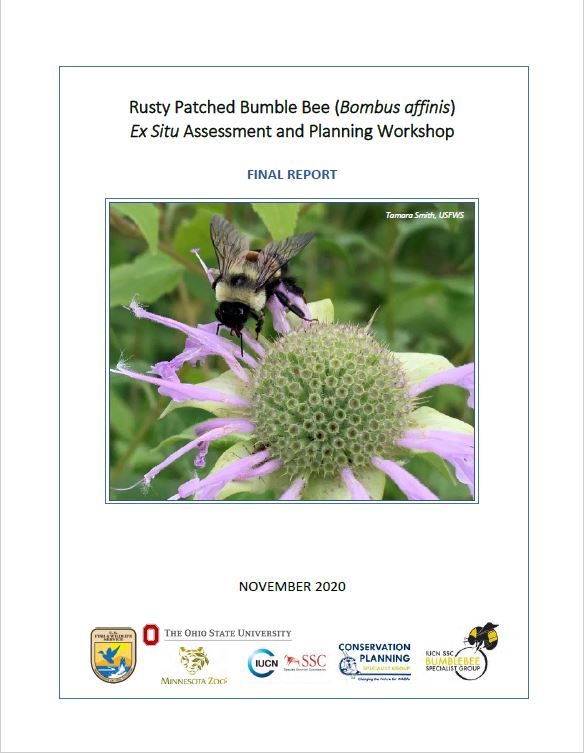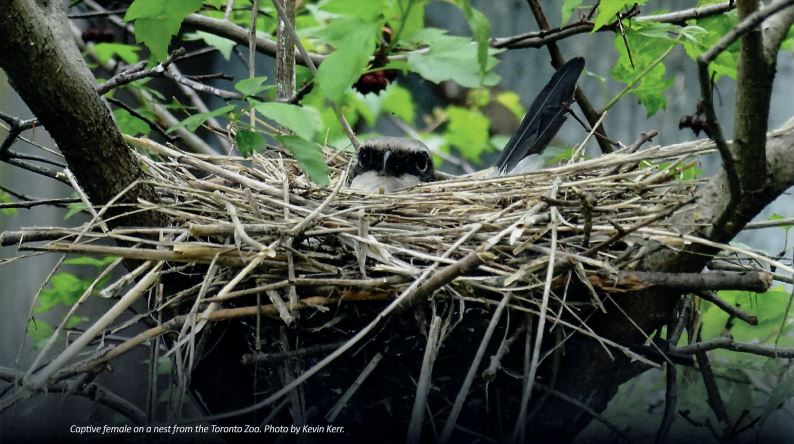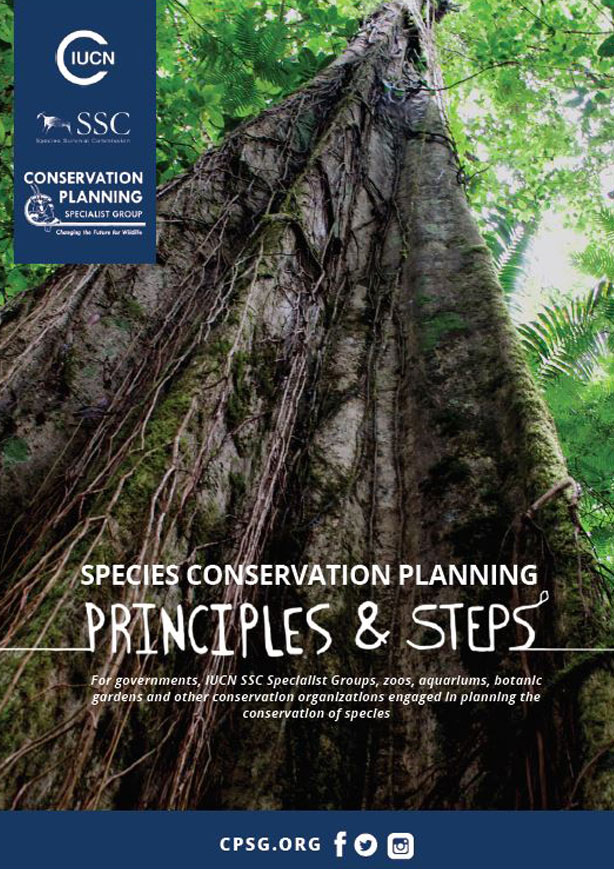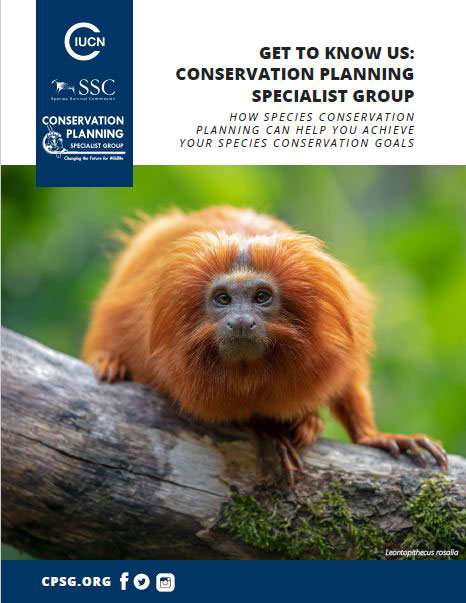Workshop Reports & Further Reading
EFFECTIVE CONSERVATION PLANNING
A new paper published by our IUCN SSC Conservation Planning Specialist Group (CPSG) colleagues discusses the importance of effective planning in conservation for addressing the continued global declines in species and increased predicted extinctions. Their proven Principles and Steps provide a succinct philosophy and framework for effective planning based on 40 years of evolving practice.
“Species conservation planning aims to increase the implementation and effectiveness of actions designed to reduce the risk of species decline and extinction. This is best accomplished by ensuring that the products of that planning:
(i) are based on a thorough analysis of the best available information,
(ii) include well-defined and achievable goals,
(iii) incorporate the full range of stakeholder perspectives,
(iv) foster agreement among those involved about what should be done to improve species status, and
(v) include a timeline for review.”
The open access article,Reversing the Decline in Threatened Species through Effective Conservation Planning, is published in Diversity.
As CPSG’s Canada Regional Resource Center, the Canadian Species Initiative promotes and applies these Principles & Steps and the One Plan Approach in Canada, thus expanding CPSG’s global Planning Capacity. These globally recognized processes can help us to identify the best available management options for our native species, and ensure we continue to safeguard Canada’s rich biodiversity.
CONSERVATION PLANNING FOR CANADIAN SNAKES
How do we decide which endangered species would benefit from human care and intensive management? CSI and Wildlife Preservation Canada began a unique planning process to assess zoo-based conservation options for all 39 snake taxa in Canada. This process lays the groundwork for future conservation programs.
CONSERVATION PLANNING WORKS!
A new study led by our IUCN SSC Conservation Planning Specialist Group (CPSG) colleague, demonstrates the impact of conservation action following science-based, participatory approaches to species conservation planning.
For the group of species studied, the overall extinction trend slowed after planning and was reversed within 15 years. While the observed change was undoubtedly driven by the sustained efforts of many dedicated individuals, working on the ground in 23 countries and over a 30-year period, the study points to CPSG planning events as a valuable turning point in these efforts, supporting stakeholders to transition rapidly to more effective ways of working together.
The article, Science-based, stakeholder-inclusive and participatory conservation planning helps reverse the decline of threatened species, is published in Biological Conservation.
“An integrative, multi-stakeholder approach to species conservation planning, which includes population viability analyses and both in situ and ex situ management consideration, could improve outcomes for some of the most challenging cases”
The Canadian Species Initiative is working to bring these globally recognized and proven processes to species recovery in Canada, while serving CPSG’s Regional Resource Centre here in Canada.
Considering potential ex situ conservation roles for Canadian snakes: an integrated approach to conservation planning (Excerpt from The Canadian Herpetologist Vol. 11, No. 1 Winter 2021)

Final Report: Canadian Snakes Integrated Collection Assessment and Planning Workshop Dec. 2021
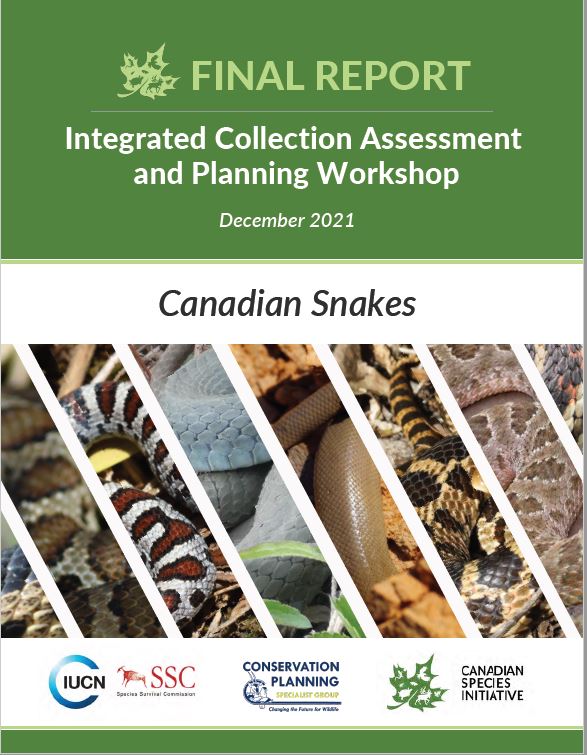
CSI participated in a conservation planning workshop for the rusty patched bumble bee, one of North America’s most threatened pollinators. The workshop brought together a wide range of global bee conservation experts to evaluate and recommend conservation breeding and other ex situ strategies to complement existing recovery strategies in the wild for this endangered species. The report highlights the critical importance of efforts to develop conservation breeding techniques for threatened bumble bees. The full workshop report is available below.
Smith, T.A., J.P. Strange, E.C. Evans, B.M. Sadd, J.C. Steiner, J.M. Mola and K. Traylor-Holzer. (Eds.). 2020. Rusty Patched Bumble Bee, Bombus affinis, Ex Situ Assessment and Planning Workshop: Final Report. IUCN SSC Conservation Planning Specialist Group, Apple Valley, MN, USA.
